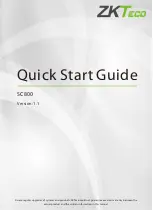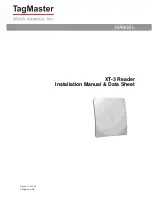
Specifications
Appendix A
AT-MIO-16D User Manual
A-2
© National Instruments Corporation
Analog Input
(continued)
Input offset voltage
±
50 mV for gain 1, adjustable to zero
(includes pot adjustment range)
±
25 mV for gain 2
±
15 mV for gain 4
±
10 mV for gain 8
±
5 mV for gain 10
±
2 mV for gain 100
±
1.5 mV for gain 500
Temperature drift
160
µ
V/
°
C + 6
µ
V/
°
C + gain
Other system offset voltage
±
85 mV for
±
10 V range, adjustable to zero
(includes pot adjustment range)
±
45 mV for
±
5 V range
±
30 mV for 0 to +10 V range
System noise (figures are for
0.15 LSB rms for gains 1 to 10
20-V range; multiply by 2 for
0.25 LSB rms for gain 100
10-V range)
0.5 LSB rms for gain 500
Explanation of Analog Input Specifications
Relative accuracy is a measure of the linearity of an ADC. However, relative accuracy is a tighter
specification than a nonlinearity specification. Relative accuracy indicates the maximum deviation
from a straight line for the analog-input-to-digital-output transfer curve. If an ADC has been
calibrated perfectly, then this straight line is the ideal transfer function, and the relative accuracy
specification indicates the worst deviation from the ideal that the ADC permits.
A relative accuracy specification of
±
1 LSB is roughly equivalent to (but not the same as) a
±
1
/
2
LSB nonlinearity or integral nonlinearity specification because relative accuracy encompasses
both nonlinearity and variable quantization uncertainty, a quantity often mistakenly assumed to be
exactly
±
1
/
2
LSB. Although quantization uncertainty is ideally
±
1
/
2
LSB, it can be different for
each possible digital code and is actually the analog width of each code. Thus, it is more specific
to use relative accuracy as a measure of linearity than it is to use what is normally called
nonlinearity, because relative accuracy ensures that the sum of quantization uncertainty and analog-
to-digital (A/D) conversion error does not exceed a given amount.
Integral nonlinearity in an ADC is an often ill-defined specification that is supposed to indicate
overall A/D transfer linearity of a converter. The manufacturers of the ADC chips used by National
Instruments specify their integral nonlinearity by stating that the analog center of any code will not
deviate from a straight line by more than
±
1
/
2
LSB. This specification is misleading because
although the center of a particularly wide code can be found within
±
1
/
2
LSB of the ideal, one of its
edges may be well beyond
±
1 LSB; thus, the ADC would have a relative accuracy of that amount.
National Instruments tests its boards to ensure that they meet all three linearity specifications
defined in this appendix; specifications for integral nonlinearity are included primarily to maintain
compatibility with a convention of specifications used by other board manufacturers. Relative
accuracy, however, is much more useful.
Differential nonlinearity is a measure of deviation of code widths from their theoretical value of
1 LSB. The width of a given code is the size of the range of analog values that can be input to
produce that code, ideally 1 LSB. A specification of
±
1 LSB differential nonlinearity ensures that
no code has a width of 0 LSBs (that is, no missing codes) and that no code width exceeds 2 LSBs.
Summary of Contents for AT-MIO-16D
Page 16: ......
Page 23: ......
Page 185: ......
Page 206: ......
Page 207: ......
Page 208: ......
Page 209: ......
Page 210: ......
Page 211: ......
Page 212: ......
Page 213: ......
Page 214: ......
Page 215: ......
Page 216: ......
Page 217: ......
Page 218: ......
Page 219: ......
Page 220: ......
Page 221: ......
Page 222: ......
Page 223: ......
Page 224: ......
Page 225: ......
Page 226: ......
Page 227: ......
Page 228: ......
Page 229: ......
Page 230: ......
Page 231: ......
Page 232: ......
Page 233: ......
Page 234: ......
Page 235: ......
Page 236: ......
Page 237: ......
Page 238: ......
Page 239: ......
Page 240: ......
Page 241: ......
Page 242: ......
Page 243: ......
Page 244: ......
Page 246: ......
Page 247: ......
Page 248: ......
Page 249: ......
Page 250: ......
Page 251: ......
Page 252: ......
Page 253: ......
Page 254: ......
Page 255: ......
Page 256: ......
Page 257: ......
Page 258: ......
Page 259: ......
Page 260: ......
Page 261: ......
















































